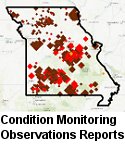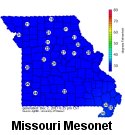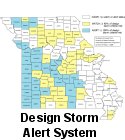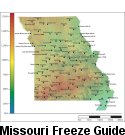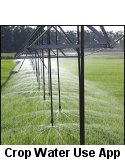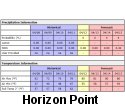
May 2023 Weather and Its Impacts on Missouri
Dr. Pat Guinan
Climatologist
Extension Associate Professor Emeritus
Daily May temperatures in Missouri were mostly above average during the first half of the month but became more seasonable during the latter half, Figure 1. Preliminary data for the state indicates a warmer than normal month with an average statewide temperature of 66.1°F, or 1.9°F above the long-term average, Figure 2. Every month this year has been warmer than normal, Figure 3.
May precipitation was variable, but drier than normal for most of Missouri. Preliminary data indicate a statewide average total of 2.82 inches, 1.84 inches below the long-term average. It was the driest May since 2012, Figure 4. The past couple months were notably dry, Figure 5. It ranked as the 6th driest April-May period on record for the Show-Me State, and driest since 1980, Figure 6. Missouri had the dubious distinction of having the largest April-May precipitation deficits across the Great Plains and Midwest, exceeding six inches in central portions of the state. Figure 7.
Using climatology, Figure 8 shows the top 20 driest Apr-May periods in Missouri over the past 128 years (1895-2022) and what happened the following summer (Jun-Jul-Aug) with respect to temperature and rainfall anomalies. Summers tend to be hotter and drier following an unusually dry Apr-May period. The rationale being that weather patterns in the region generally become more stagnant as summer approaches, and an established weather pattern in April, and especially May, could linger well into the summer. Additionally, dry soil conditions at the onset of summer, combined with drought-stressed vegetation, will increase the likelihood for less water vapor near the earth's surface and more of the sun's energy will be available to heat the lower levels. In essence, spring drought begets summer heat.
Dryness expanded and intensified across Missouri during May. According to the Drought Monitor map for May 30, 2023, moderate to extreme drought was impacting much of the northern 2/3 of the state, Figure 9. Precipitation deficits over the past 12-months exceeded 16-inches in pockets of central and southwestern Missouri, Figure 10, and hydrological drought impacts were occurring in the form of low streamflow, dwindling water supplies and depleted sub-soil moisture in the driest areas.
According to the Missouri Agricultural Statistics Service, as of May 28, 2023, corn planting was complete with 93% emerged; 52% of the corn was in good condition and 31% fair. Soybean was 86% planted, compared to the 5-year average of 47%; soybean was 47% good and 35% fair. Pasture conditions continued to deteriorate with 23% good, 41% fair, and 29% poor. Hay supplies and other roughages were listed at 39% adequate, 31% short and 30% very short. Stock water supplies were 66% adequate, 31% short and 3% very short. Topsoil moisture supplies were 38% adequate, 45% short and 17% very short while subsoil moisture supplies were 1% surplus, 41% adequate, 42% short and 16% very short.
It is imperative widespread and significant rainfall returns soon, or agricultural and hydrological drought impacts will continue to worsen, and increase, as summer approaches.
Jump to:
- Figure 1
- Figure 2
- Figure 3
- Figure 4
- Figure 5
- Figure 6
- Figure 7
- Figure 8
- Figure 9
- Figure 10
- Figure 11
- Figure 12
- Figure 13
- Figure 14
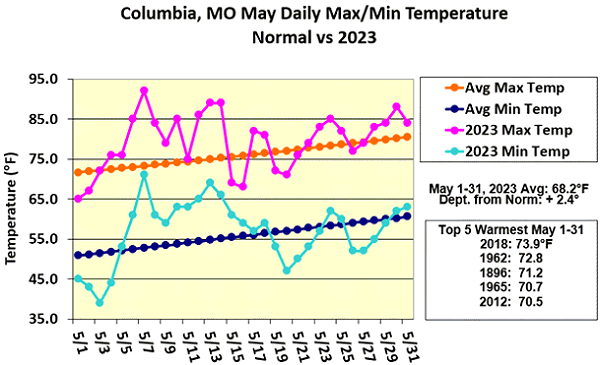
Figure 1.
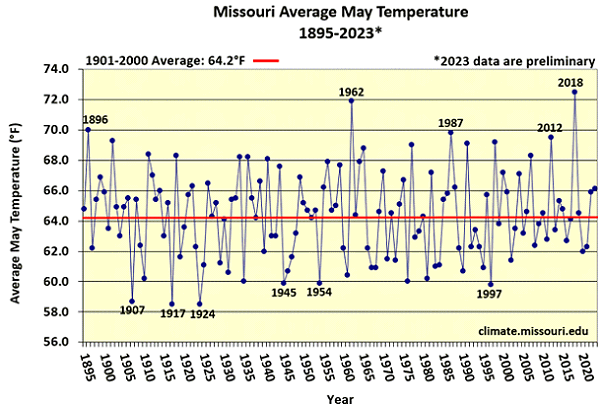
Figure 2.

Figure 3.
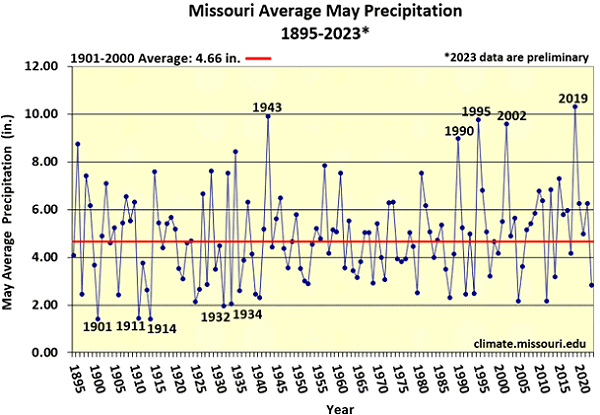
Figure 4.
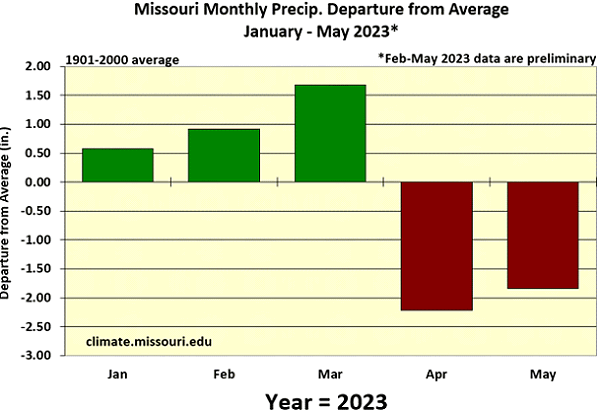
Figure 5.
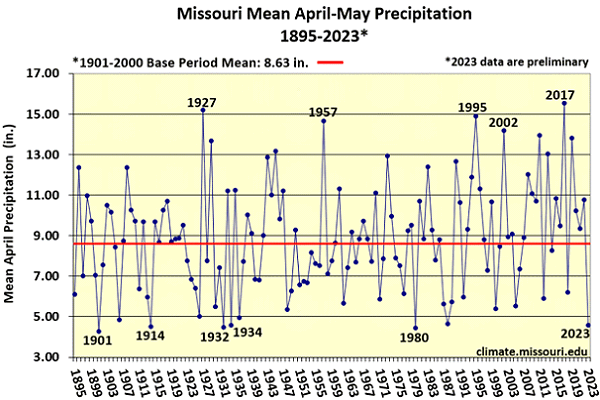
Figure 6.
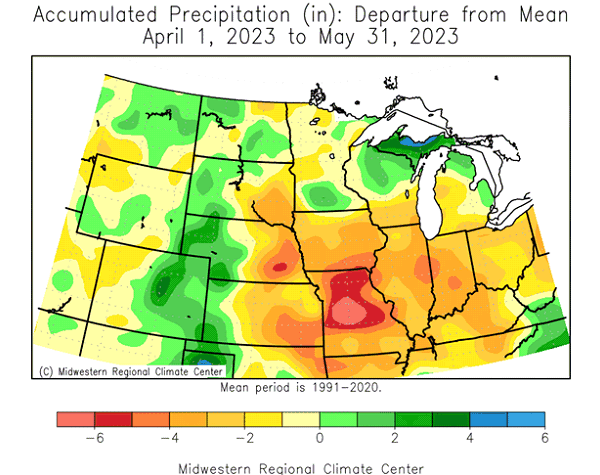
Figure 7.

Figure 8.
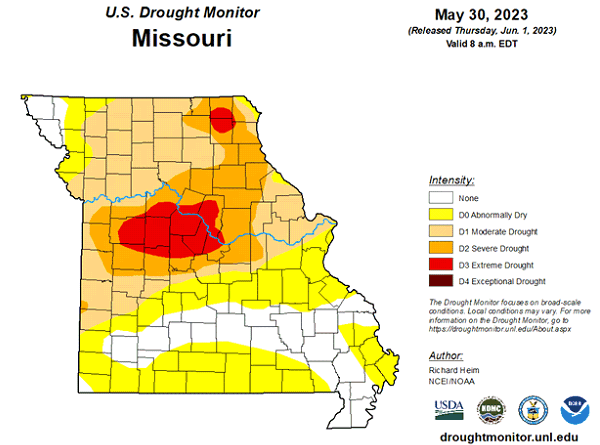
Figure 9.
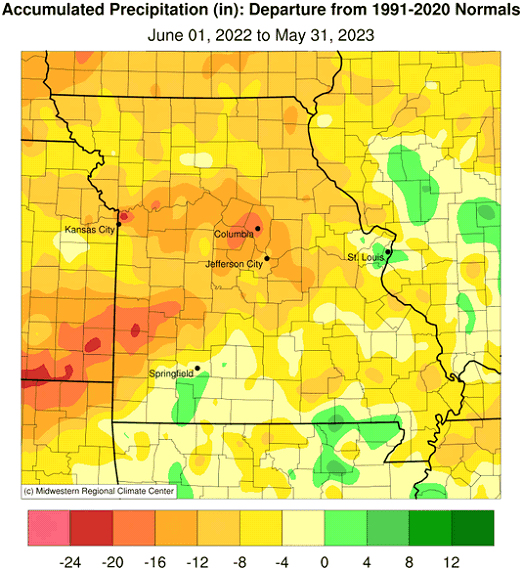
Figure 10.
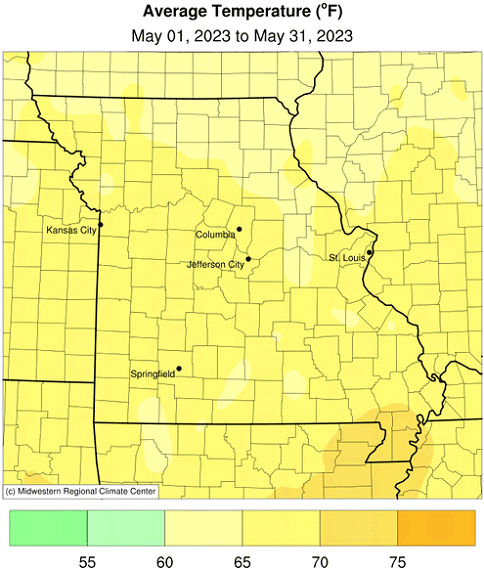
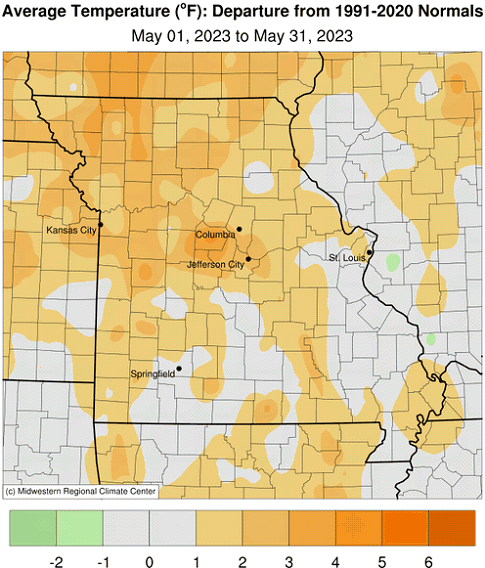
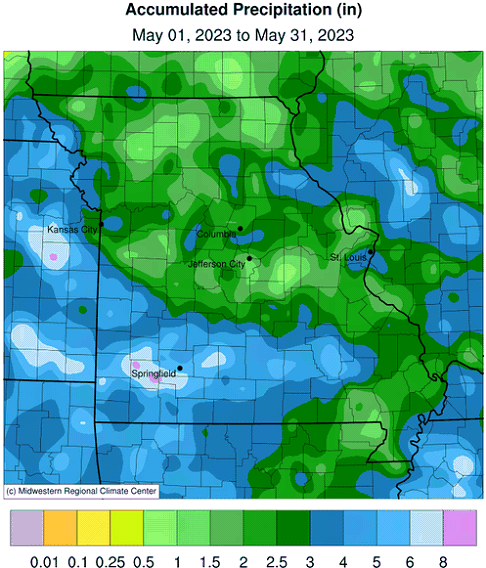
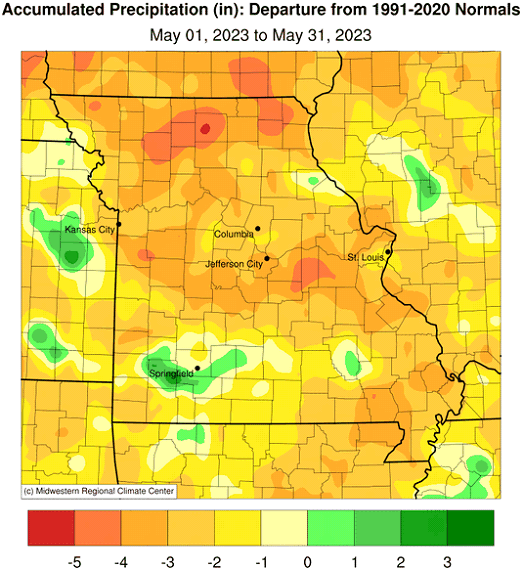
Source: Dr. Pat Guinan, 573-882-5908


